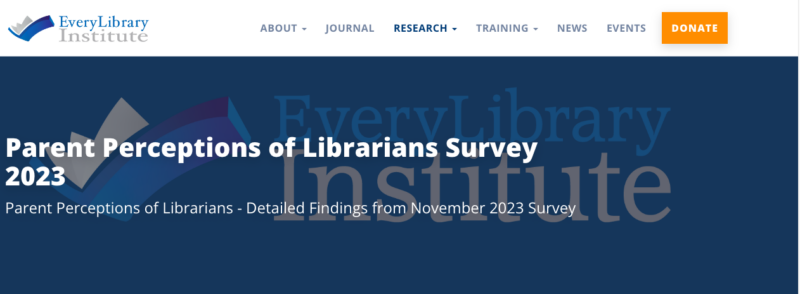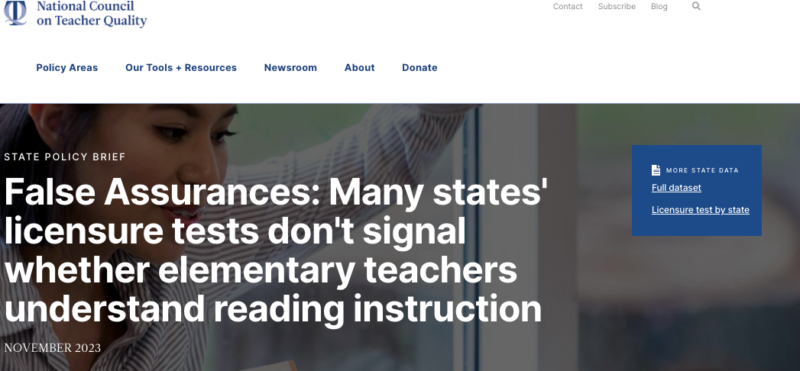With college application season in full swing and the competition for acceptance into top schools more competitive than ever, students are turning to AI-powered tools for application support, reveals a new survey from Brainly. Seventy percent of high school juniors and seniors believe AI-powered tools, including ChatGPT, can be a resource in brainstorming ideas for their college essays or short answer responses. Brainly’s survey earlier this year reveals that high-school students are also accessing AI-powered tools, such as those integrated into Brainly’s educational app, for individualized homework help.

Brainly’s survey comes when the acceptance rate among the best universities continues to shrink, making it harder for students to gain entry to their top higher education choices. For example, the College Board reports that in 2022, Harvard received applications from 61,220 students – the highest-ever number of applicants, but only accepted 1,214, the elite university’s lowest acceptance rate.
The survey data underscores a fundamental change in how students utilize AI tools for college applications. Rather than relying solely on AI to write their essays, students use these tools to foster critical thinking, inspire creativity, and brainstorm potential topics. The statistics demonstrate a nuanced and balanced approach, showcasing that AI is not replacing traditional guidance but enhancing and complementing it.
Highlights of the survey include:
- Increasing reliance on AI-powered tools: Nearly 70% of surveyed seniors believe AI-powered tools, including ChatGPT, are valuable resources for brainstorming ideas for college essays and short-answer responses. This data reinforces the growing acceptance and reliance on AI for creative inspiration in the competitive field of college admissions.
- Growing trust in AI tools: Almost 60% of seniors express trust in responses generated by AI-powered tools, highlighting confidence in the technology’s ability to guide them through the application process. This finding emphasizes that students view AI as a helpful and trustworthy ally in navigating the intricacies of college applications.
- Juniors plan to engage AI tools: Nearly 73% of high school juniors are considering leveraging AI-powered tools for brainstorming ideas. This indicates a proactive approach by juniors to integrate AI into their application preparation, showcasing a shift in how students approach college admissions well in advance.
- Collaboration with traditional guidance: While AI tools are gaining popularity, the survey reveals that seniors also seek guidance from traditional sources, with 57.5% consulting a college counselor and 48.3% turning to a parent or family member. This indicates a complementary relationship between AI and traditional support systems in the college application journey.
“Brainly’s survey results closely align with what I see in the students I work with and prepare for college,” said Cammy Barber, MEd, School Counselor & Department Chair, St Augustine High School, St Augustine, Fla. “Students are looking for ways to save time and assure them that they are on the right path. AI-powered tools can help students brainstorm ideas for a college essay. It can give suggestions for how to write a college application essay for those who lack writing skills, too. It’s also a great way to narrow a student’s search criteria when looking for a college.”
The “Public Libraries and Book Bans – Parent Perception Survey” gathered insights from 1,527 parents and guardians with children under 18 in two surveys during October and November 2023. The surveys asked parents and guardians about their perception of librarians’ trustworthiness as professionals and curators of a library collection. The results are detailed in a new report from EveryLibrary Institute and Book Riot.

Top-level findings are:
- An impressive 92% of parents, grandparents, and guardians trust librarians to curate appropriate books and materials.
- 90% of parents report being comfortable allowing their child to select their own materials and 96% feel their children are safe within the library.
- 83% agree that librarians know what books children would love; 77% agree that librarians are friendly and approachable; 77% agree that librarians make the library a place for fun and creativity; and 85% agree that librarians support children’s learning.
- 91% of parents and guardians say that they trust public librarians and 86% find school librarians trustworthy.
- Parents are of mixed opinion on whether they think public librarians have a political agenda:
- Yes, and they should = 35%
- No, but they should = 9%
- Yes, and they should not = 12%
- No, and they should not = 44%
- 85% of parents report being satisfied or very satisfied with librarians
The survey results demonstrate that librarians in schools and public libraries are trusted by families of various backgrounds and income levels and are valued in society. Librarians are valued in society and are central to education and communities. They foster safe, engaging environments that support learning and creativity, with their expertise and warmth resonating deeply with parents nationwide.
“This survey shows how out-of-touch politically motivated book banning and censorship groups are,” said John Chrastka, EveryLibrary Institute Executive Director. “Contrary to the narratives that so-called parent rights groups are advancing, parents across America value librarians’ roles in our communities and our children’s education. Pro-censorship groups do not represent the vast majority of parents or guardians in their beliefs about librarians, reading, education, and civil society.”
“Book Riot is excited to continue collaborating with EveryLibrary Institute on this important project. This survey is the next step in our shared goal of championing literacy, supporting libraries and librarians, and learning about parental perceptions of the work that librarians do,” said Vanessa Diaz, Book Riot Managing Editor. “It’s a natural extension of Kelly and Danika’s tireless efforts in spreading awareness of the state of censorship and books bans in the US, and we hope as ever that this research will both educate and be a catalyst for change.”
“We are once again excited to partner with EveryLibrary on assessing and understanding parental perceptions of the public library,” said Kelly Jensen from Book Riot. “This series of surveys further our knowledge on what libraries are doing right and allows us to see where and how we can advocate for better understanding the roles libraries play in the lives of the average person. We continue to be thrilled to see the vast majority of parents think that the public library is a safe place for their children.”
Please review the complete survey findings at https://www.everylibraryinstitute.org/parent_perceptions_librarians_survey_2023. This survey is the second in a series of three focusing on parents and libraries. Please watch for additional surveys on perceptions of school libraries in the coming weeks.
In a new analysis, the National Council on Teacher Quality (NCTQ) finds that most states (29 states and the District of Columbia) use a weak elementary teacher reading licensure test, meaning that they do not effectively measure teachers’ knowledge of scientifically based reading instruction prior to entering the classroom. One state, Iowa, requires no reading licensure test at all. This shortcoming means that, every year, nearly 100,000 elementary teachers across the country enter classrooms with false assurances that they are ready to teach reading.

The data brief, False Assurances: Many states’ licensure tests don’t signal whether elementary teachers understand reading instruction, provides the most up-to-date analysis on the quality of elementary reading teacher licensure exams being used by each state.
More than 50 years of research has illuminated the most effective way to teach children to read. It requires systematic, explicit instruction in the five core components of the science of reading: phonemic awareness, phonics, fluency, vocabulary, and comprehension. Preparing teachers to teach these five components—known as scientifically-based reading instruction—can ensure more than 1 million additional students enter 4th grade able to read each year.
Unfortunately, far too often, states allow teachers into the classroom inadequately prepared to teach reading. Licensure exams, if rigorous and aligned to the science of reading, can serve as an important guardrail for making sure teachers have this critical knowledge. However, many licensure tests are weak in that they do not adequately assess teachers’ preparedness to teach reading. Far too many states are using these weak tests.
“Every child deserves great reading instruction, but far too many children aren’t receiving it,” said NCTQ President Heather Peske. “As part of a comprehensive strategy to improve reading instruction, states can help ensure teachers are prepared to teach reading effectively by requiring stronger licensure tests.”
Examining every elementary teacher reading licensure exam currently being used by states, NCTQ looked for evidence that the tests adequately address the five core components of reading. NCTQ also examined whether these tests devote undue attention to methods of reading instruction that have been debunked by research and can hinder students from becoming strong readers, such as three-cueing. Additionally, NCTQ checked whether these tests combine reading with other subjects. This is important because if subjects are combined, the teacher’s understanding of reading could be masked. Using these criteria, NCTQ determined whether tests were strong, acceptable, weak, or unacceptable.
Key national findings:
- Of the 25 elementary teacher reading licensure tests in use by states, the majority (15) are weak.
- Just six exams are rated “strong” and four are rated “acceptable.”
- Across these 15 weak licensure tests:
- Ten do not adequately address all five components of the science of reading.
- Five combine reading with other subjects, such as social studies or science.
- (Note, one test fits into both categories listed above)
- One includes too much emphasis on content contrary to research-based practices.
- The majority of states (29 states and the District of Columbia) use “weak” tests that do not signal whether teachers have the knowledge they need to teach students to read.
“Teachers who aren’t prepared in the most effective instructional practices for teaching reading unknowingly enter classrooms ill-prepared to help students become successful readers,” said Peske. “This lack of preparation has a profound impact on students’ literacy skills and future prospects, especially among students of color and those living in poverty.”
Roughly one-third of children in elementary classrooms across the country cannot read at even a basic level by the middle of the fourth grade. The situation is even bleaker for historically marginalized students, for whom inadequate reading instruction is yet another barrier to educational equity, with 56% of Black students, 50% of Hispanic students, 52% of students in poverty, 70% of students with disabilities, and 67% of English Learners reading below basic reading levels.
Students who are not proficient readers are four times more likely to drop out of high school, face lower lifetime earnings, and have higher rates of unemployment.
Recommendations
To address this pressing issue, the NCTQ recommends the following solutions.
State education leaders should:
- Transition to a stronger reading licensure test: States select and approve the tests that their teachers must pass for licensure. Requiring a stronger test will likely lead to better reading instruction in elementary classrooms across the state as preparation programs will be motivated to align their courses with the components of reading addressed in a stronger test.
- Require a strong reading test for anyone teaching students in the elementary grades. In some cases, states require reading tests for general education elementary teachers but not for special education teachers or for early childhood teachers who are licensed to teach lower elementary grades. These loopholes ultimately hurt the students who most need teachers capable of building a foundation in literacy.
Testing companies should:
- Shore up weaknesses and clearly identify limitations in existing tests: Both major testing companies, ETS and Pearson, have strong and acceptable reading licensure tests on the market, but they also offer tests that omit numerous topics from the core components of reading, and that combine reading with other subjects, diluting the assessment’s ability to verify teachers’ reading knowledge.
Resources





